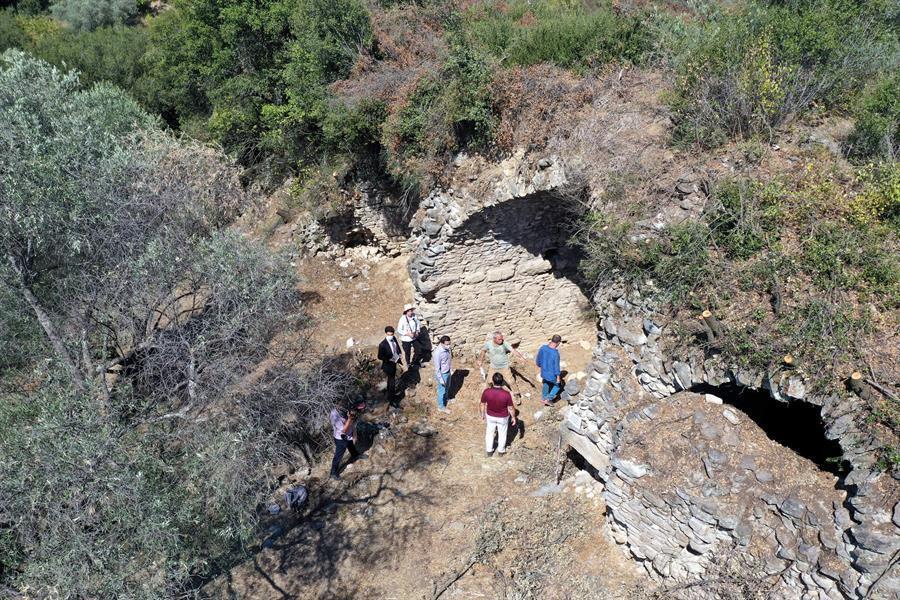
A structure similar to Rome’s Colosseum, regarded as the best example of Roman architecture in the world, has been unearthed in the 2,700-year-old Mastaura ancient city in the Aegean province of Aydın’s Nazilli district.
The discovery of the Colosseum, which has been preserved under the ground between olive and fig groves, has created excitement in the world of archeology.
Inspired by the notes of European travelers who traveled in the region about 200 years ago, archaeologists discovered the only example of the Colosseum in Rome. There are seven to eight similar examples in Anatolia but they have not survived until today.
The research team, who discovered the remains of a medium-sized amphitheater with a diameter of about 100 meters, whose walls are about 14-15 meters high and has rows of seats, is about to complete the surveys in the region.
While it was observed that treasure hunters caused great damage to the approximately 2,700-year-old artifacts in the region from the Roman period, important findings were obtained during the preliminary examinations. After the completion of the excavations and the unearthing of the Colosseum, the ancient city of Mastaura is expected to be the only example in the world. It was reported that the excavation works will begin in late 2020.
The head of the excavations, Sedat Akkurnaz, a member of the archaeology department at Aydın Adnan Menderes University, said the ancient city of Mastaura is a small one located four kilometers from central Nazilli.
“People lived here for about 2,500 years. They moved to Nazilli 200-300 years ago. Mastaura is an important ancient settlement that has been known for nearly 200 years. When European travelers came to visit Anatolia in the 18th century, they also visited Mastaura and shared information about it. When we examined the notes of those travelers, we saw that they gave very interesting information about Mastaura. This interesting information that catches our attention was that there was an amphitheater in Mastaura. Then we intensified our research on the amphitheater and we discovered the location of this amphitheater about a week ago.”
Akkurnaz said that they found the remains of the structure and since it is a privately owned land, they are making the necessary talks with the ministry to protect this place.
Stating that works continued on the amphitheater, which is believed to have been built 2,700 years ago in the Roman-era, Akkurnaz said, “There are seven-eight known examples in Anatolia. But these samples are not as well preserved as this one in Mastaura. While most of the examples there were destroyed or the materials moved elsewhere, this amphitheater in Mastaura is an important ancient amphitheater with seats under olive trees and an orchestra.”
He said that they were about finish this year’s work and will continue working next year.
Ruins from 5,000 years ago
Akkurnaz said that they photograph the artifacts they find there and make drawings and measurements to determine which civilizations, periods and dates they belong to.
“We have been doing research around Nazilli and have found historical artifacts in many different places starting from 5,000 years ago until recently. Here, ceramic pieces are found, too. We examine and determine the periods they belong to with our students,” he said.
Aydın Culture and Tourism Provincial Director Umut Tuncer said that the newly founded structure is one of the rare arenas in Anatolia.
“We have some theaters in our region that we have identified before, but these theaters were in the shape of half a moon. This is a complete Colosseum structure. There is no such strong structure in Anatolia,” Tuncer added.